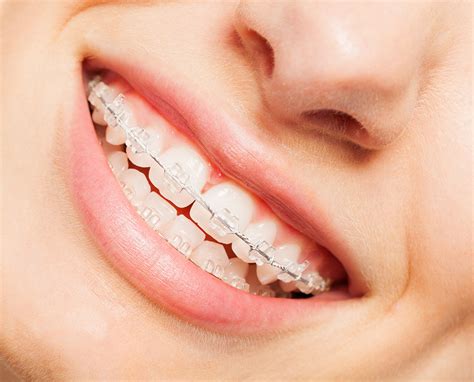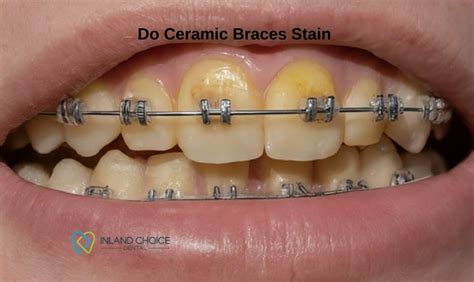are ceramic brackets bigger than metal Brackets that are made of ceramic may be larger than metal brackets and may be less comfortable for some people. Easily stained. Some studies have shown that ceramic brackets may. Keep your office running smoothly with this WorkPro lateral file cabinet. There's plenty of room to store documents, and the drawers fully extend to help you reach items way in the back.
0 · white ceramic brackets
1 · do ceramic brackets stain
2 · ceramic vs ceramic braces
3 · ceramic metal brackets vs silver
4 · ceramic metal brackets
5 · ceramic braces vs silver brackets
6 · ceramic braces vs metal brackets
7 · ceramic braces vs metal
$14.99
white ceramic brackets
14 inch metal tool box
Ceramic brackets are larger than metal brackets. This can make it harder to clean around your brackets, leading to swollen gums or receding gums if your toothbrush doesn’t reach the enamel. Cleaning them is harder — Ceramic brackets are larger than metal ones, making oral hygiene more difficult. This can lead to oral health problems such as cavities and gum disease. They might break — Ceramic braces are . As we’ve talked about, the major difference between metal and ceramic braces is aesthetic: the brackets are made of a composite that looks like ceramic material. Ceramic brackets are also less durable than stainless steel . Brackets that are made of ceramic may be larger than metal brackets and may be less comfortable for some people. Easily stained. Some studies have shown that ceramic brackets may.
Ceramic braces function similarly to metal ones but use clear or tooth-colored brackets, making them less conspicuous. • Aesthetics: They blend seamlessly with natural teeth, offering a more discreet look. • Efficiency: .
The differences between metal and ceramic braces can be summarized by: Metal braces are typically more affordable; Ceramic braces are less noticeable as they match the . While ceramic braces are designed to withstand the rigours of orthodontic adjustments, they may require a bit more care to prevent breakage compared to their metal . Studies have found clear/ceramic braces are more than twice as likely to break off or fracture as metal brackets. This makes care and compliance extremely important: you can’t eat any crunchy foods or hard candies with .Ceramic braces are larger than metal braces; this makes it more difficult to clean ceramic braces and results in poor oral hygiene and loss of calcium around the teeth. Ceramic material is .
That being said, ceramic braces are a little bigger than metal ones—which can cause more irritation, particularly at the gumline. Your orthodontist can give you wax to place over the brackets if irritation persists.
Ceramic brackets are larger than metal brackets. This can make it harder to clean around your brackets, leading to swollen gums or receding gums if your toothbrush doesn’t reach the enamel. Cleaning them is harder — Ceramic brackets are larger than metal ones, making oral hygiene more difficult. This can lead to oral health problems such as cavities and gum disease. They might break — Ceramic braces are less durable than metal ones. They’re more than twice as likely to break or fracture, especially on the lower teeth. As we’ve talked about, the major difference between metal and ceramic braces is aesthetic: the brackets are made of a composite that looks like ceramic material. Ceramic brackets are also less durable than stainless steel brackets.
do ceramic brackets stain
Brackets that are made of ceramic may be larger than metal brackets and may be less comfortable for some people. Easily stained. Some studies have shown that ceramic brackets may. Ceramic braces function similarly to metal ones but use clear or tooth-colored brackets, making them less conspicuous. • Aesthetics: They blend seamlessly with natural teeth, offering a more discreet look. • Efficiency: Capable of treating a wide range of orthodontic issues, just like metal braces. The differences between metal and ceramic braces can be summarized by: Metal braces are typically more affordable; Ceramic braces are less noticeable as they match the color of your child's teeth; The 'clear' brackets can become stained over time; Ceramic braces may need more extended treatment than metal braces; Ceramic braces can become . While ceramic braces are designed to withstand the rigours of orthodontic adjustments, they may require a bit more care to prevent breakage compared to their metal counterparts. Metal braces: Stainless steel, known for its robustness and resilience, is the primary material used in metal braces.
Studies have found clear/ceramic braces are more than twice as likely to break off or fracture as metal brackets. This makes care and compliance extremely important: you can’t eat any crunchy foods or hard candies with ceramic braces, for risk of breaking. Ceramic brackets are also more likely to stain, due to their lighter color.
Ceramic braces are larger than metal braces; this makes it more difficult to clean ceramic braces and results in poor oral hygiene and loss of calcium around the teeth. Ceramic material is much more breakable than metal, and it can easily chip or break. That being said, ceramic braces are a little bigger than metal ones—which can cause more irritation, particularly at the gumline. Your orthodontist can give you wax to place over the brackets if irritation persists.
Ceramic brackets are larger than metal brackets. This can make it harder to clean around your brackets, leading to swollen gums or receding gums if your toothbrush doesn’t reach the enamel. Cleaning them is harder — Ceramic brackets are larger than metal ones, making oral hygiene more difficult. This can lead to oral health problems such as cavities and gum disease. They might break — Ceramic braces are less durable than metal ones. They’re more than twice as likely to break or fracture, especially on the lower teeth. As we’ve talked about, the major difference between metal and ceramic braces is aesthetic: the brackets are made of a composite that looks like ceramic material. Ceramic brackets are also less durable than stainless steel brackets. Brackets that are made of ceramic may be larger than metal brackets and may be less comfortable for some people. Easily stained. Some studies have shown that ceramic brackets may.
Ceramic braces function similarly to metal ones but use clear or tooth-colored brackets, making them less conspicuous. • Aesthetics: They blend seamlessly with natural teeth, offering a more discreet look. • Efficiency: Capable of treating a wide range of orthodontic issues, just like metal braces. The differences between metal and ceramic braces can be summarized by: Metal braces are typically more affordable; Ceramic braces are less noticeable as they match the color of your child's teeth; The 'clear' brackets can become stained over time; Ceramic braces may need more extended treatment than metal braces; Ceramic braces can become .
While ceramic braces are designed to withstand the rigours of orthodontic adjustments, they may require a bit more care to prevent breakage compared to their metal counterparts. Metal braces: Stainless steel, known for its robustness and resilience, is the primary material used in metal braces. Studies have found clear/ceramic braces are more than twice as likely to break off or fracture as metal brackets. This makes care and compliance extremely important: you can’t eat any crunchy foods or hard candies with ceramic braces, for risk of breaking. Ceramic brackets are also more likely to stain, due to their lighter color.


Maintain an organized workstation with this WorkPro lateral drawer file cabinet. Steel construction with a sleek finish offers a simple modern look, while the drawers provide ample space for legal-size and letter-size documents.
are ceramic brackets bigger than metal|ceramic braces vs silver brackets